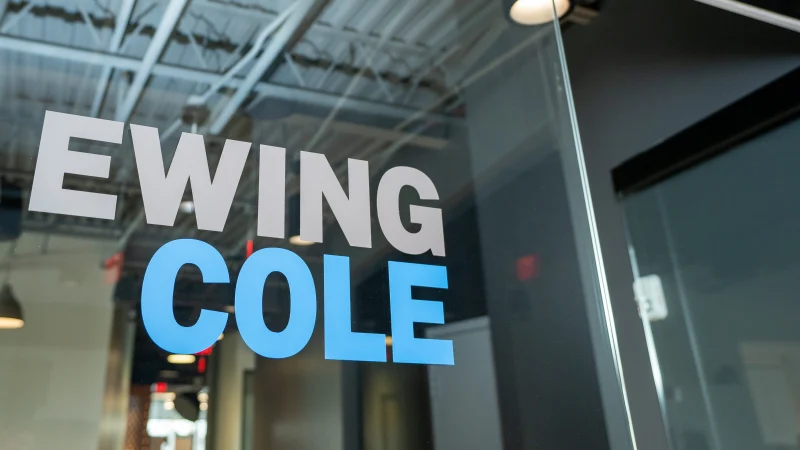Using the Past to Create the Future
Our design team leaned on Irving Plaza’s storied past to reignite its future.
Irving Plaza
New York, NY
Nestled between Midtown and Lower Manhattan, Irving Plaza has long been a landmark in New York’s music scene, where punk rock legends have taken the stage and generations of fans have packed its dance floor. Before 1870, 15 Irving Place was three separate dwellings, later becoming a Gilded Age hotel, a public meeting hall, and a stage for untold stories, before evolving into a concert venue in the 1990s.
When the venue closed in 2019 for a planned renovation, EwingCole’s Sports & Entertainment team was presented with an unexpected trove of inspiration: a collection of historical newspaper clippings and public records that unearthed colorful episodes from the building’s past.
While not a historic preservation, EwingCole designers sought to imagine what those spaces might have looked like during the early 20th Century and bring those features and elements to life. Victorian in nature, the design beautifully weaves the décor of a historic NYC home with a modernized version of the theatre’s punk, metal, and indie rock legacy. Fans can expect a heightened visual and auditory experience upon seeing their favorite live music acts. Improvements and new additions to the theatre include a refreshed entry and lobby, a new lobby bar, a revitalized music hall, improved sightlines and seating from the mezzanine, and a new VIP, speakeasy-style cellar bar and lounge.
Picture it, New York. 1901
Each interior design element celebrates a moment in the building’s storied past and the individuals who once walked its halls. By 1800, 15 Irving Place was home to Hotel America, a favorite among upper-class Spanish-speaking foreign travelers.
Our team discovered two articles from the New York Times and the Philadelphia Inquirer that tell the story of one of Hotel America’s VIP guests, Mrs. Rosalia Abreu, and her favorite pet monkey, Jocco. Abreu, a Cuban aristocrat and primate lover, famously trained and collected roughly 200 primates in her home. She was the first person to breed a chimpanzee in captivity and is credited with launching the scientific study of primates.
While staying at the Hotel America in New York in 1901, her favorite pet, a capuchin monkey named Jocco, was kidnapped. The perpetrator demanded a ransom of approximately $92,000 in today’s currency, which Abreu refused to pay. Fortunately, Jocco was returned safely to the hotel. Quirky stories like this are what inspired the interior design concept of Irving Plaza.
Jocco’s Lounge
EwingCole transformed the lower-level VIP lounge into a turn-of-the-century parlor inspired by Abreu’s legacy of lavish hospitality. Guests descend a grand new staircase and are greeted by a custom portrait of Jocco and a speakeasy-style cocktail bar. Lush textures and layered details define the space: reclaimed New York brick, walnut built-ins, vintage candelabras, emeralite lamps, and antiqued mirrors evoke a luxurious, lived-in charm.
The team envisioned what it would be like to attend one of Abreu’s exclusive gatherings, channeling that spirit into a room that strikes a balance between intimacy and opulence. Every object tells a story, from the embossed ceiling and repurposed phonograph lamp to the cozy banquettes framed by built-in bookcases. It’s a space designed for storytelling, for lingering, and for reveling in the unexpected.
A Second Chance at a First Impression
The venue’s entry sequence received a dramatic refresh. Under a restored marquee, guests are welcomed by a new hexagonal mosaic bearing the Irving Plaza name. The updated lobby introduces a bolder personality, merging classic Gilded Age finishes with a gritty, urban sensibility. While some historic elements, like original chandeliers, were carefully restored, others, like the ornamental tin ceiling, were replaced in kind to accommodate acoustic and structural upgrades.
The reconfigured first floor now features a leveled layout for improved accessibility and performance. A brand-new lobby bar, detailed in wood and brass, anchors the space and draws inspiration from early 20th-century New York cafés. A Victorian-inspired wallcovering conceals hidden motifs, including a devilish design nod that rewards repeat visitors with a playful twist.
Ready to Rock
The double-height music hall remains the beating heart of Irving Plaza. Here, EwingCole maintained key features that fans know and love: tin ceilings, crystal chandeliers, and a polished wood dance floor, while introducing new elements that elevate the concert experience. A row of standing balcony boxes wraps the mezzanine, framed by custom railings and fascia lighting that bring visual energy to the space, especially when the crowd surges below.
New bars on the main and mezzanine levels continue the design language with reclaimed brick, metal mesh cabinet doors, and glowing, amber-lit countertops. These back-of-house enhancements enhance functionality while preserving the soul of the venue.
Leather, Lace, and Layered Details
EwingCole’s design navigates the tension between Irving Plaza’s refined past and its rock-and-roll present. The result is an eclectic aesthetic that balances elegance with irreverence, “where leather meets lace.” Classical moldings, brass inlays, and rich textures blend with subversive art and cheeky details, like bathroom wallpaper patterned with lightning bolts in homage to David Bowie.
Throughout the building, moments of delight and surprise invite concertgoers to look closer and experience more. It’s an environment designed not just for performance, but for memory-making.
The Encore
What began as a simple refresh evolved into a layered homage to a building—and a city—that never stops reinventing itself. Irving Plaza now stands as a recharged cultural destination: one that honors its stories, welcomes new ones, and celebrates the joy of coming together through music.







